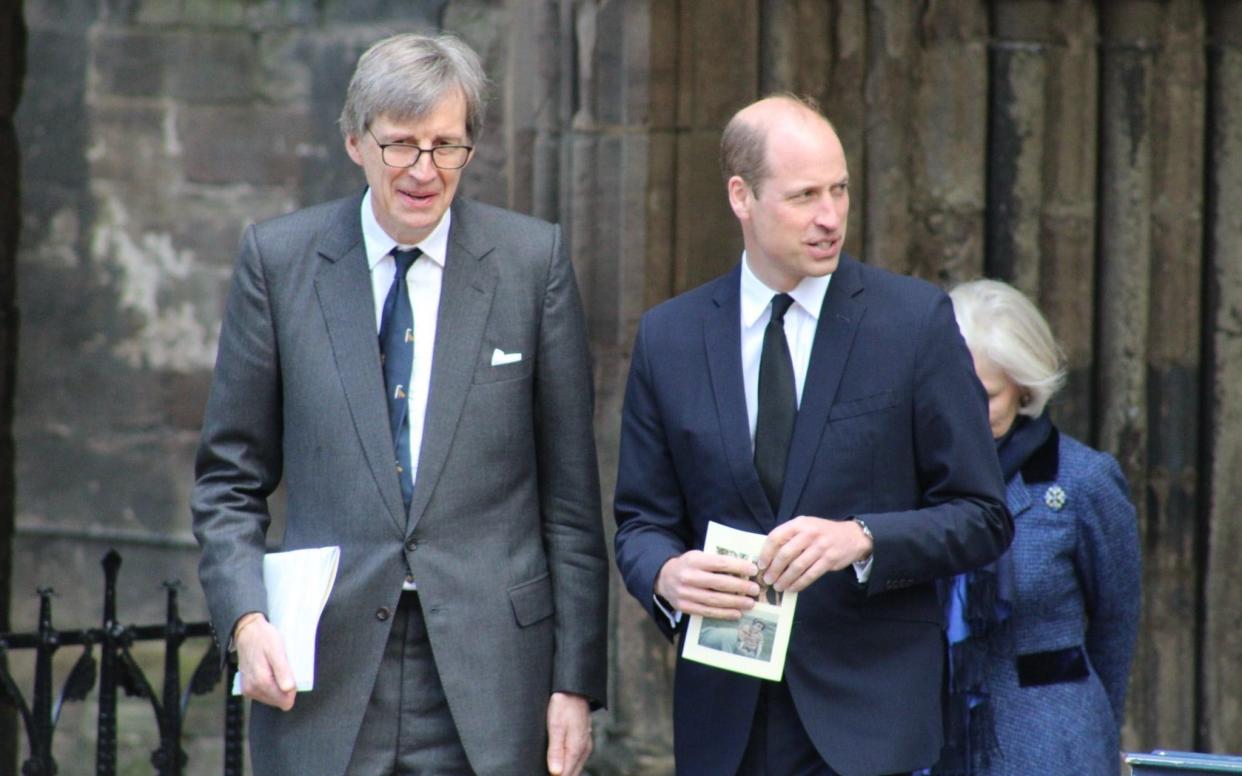Prince William attends memorial for last of the SAS ‘Originals’

The Prince of Wales attended a memorial service on Friday for Maj Mike Sadler, the last of the wartime SAS “Originals”.
Prince William, 41, who in 2009 became the first member of the Royal family to be seconded to the SAS, was invited to the private memorial service, at Hereford Cathedral, in a personal capacity.
It comes after he returned to public duties this week for the first time since the Princess of Wales revealed she was undergoing cancer treatment. The family spent the three-week Easter break in Norfolk.
On Wednesday, during a visit to Surplus to Supper, the food distribution charity, in Sunbury-on-Thames, Surrey, the Prince promised a wellwisher that he would “take care” of his wife.
Maj Sadler, who died aged 103 in January, was awarded the polar medal, military medal and military cross for his service.
In 2018, he was further recognised with France’s highest honour, the Legion d’Honneur. He also has a piece of the Antarctic named after him.
Maj Sadler’s exploits were dramatised in the BBC series SAS: Rogue Heroes, based on the 2016 book of the same name by Ben Macintyre.
The SAS was created by David Stirling in 1941 as a desert raiding force, working behind German lines in Northern Africa, carrying out sabotage missions along Rommel’s supply lines.
The Originals are regarded as the 21 men who made it back from the SAS’s first disastrous mission on 16 November 1941, parachuting into the Libyan desert in the dark during a storm. While 55 took part, 34 were either killed or captured.
Exceptional
Maj Sadler became an honorary member after picking up the survivors with the Long Range Desert Group (LRDG), a reconnaissance unit based in the North African desert for which he worked as the principal navigator.
Mr Stirling recognised his exceptional navigational skills during the mission and poached him for his team.
Maj Sadler’s first SAS operation was a raid on an airfield at Wadi Tamet in December 1941.
He would later describe how they were bombed on the way, saying they could “see the bombs leaving the aircraft” but they managed to evade further scrutiny and dropped the SAS team three miles from the target.
Another raid was on the airfield at Sidi Haneish, which involved astro-navigating 18 Jeeps across 70 miles of desert without lights or maps.
Maj Sadler delivered them to within a mile of the runway, inadvertently driving through the German column that was pursuing them as they made their escape.
He was later notified by radio that he had been awarded the Military Medal. Later in the war, after commissioning, he was awarded the Military Cross for actions in France.
At the end of the war, Maj Sadler volunteered to go to Antarctica with the Falkland Islands Dependencies Survey, later the British Antarctic Survey.
He was awarded the Polar medal for his work setting up a new base on Stonington Island, which was connected to the mainland by a glacier.
On his return to the UK, he briefly worked for the US embassy in London, before being recruited by MI6 to help plan cold-war operations, staying with the intelligence service until his retirement in the mid-1980s.
In 2009, Prince William spent up to six weeks with the Special Services as part of his training across all branches of the military in preparation for when he becomes the head of the Armed Forces, as King.
He spent time with the SAS, its ultra-covert sister regiment the Special Boat Squadron and the elite Special Reconnaissance Regiment.


